Understanding climate change
4 Nov 2022
Researchers from a variety of disciplines shed light on terms currently used in the climate debate – from species shift to planetary health.
4 Nov 2022
Researchers from a variety of disciplines shed light on terms currently used in the climate debate – from species shift to planetary health.
What exactly does the CDR method involve? Why is everyone talking about an energy transition? And how does climate monitoring work? LMU experts explain some of the technical terms that are now frequently encountered in the media.

© LMU
“Take a defined area on land or in water at any given time and you will find a certain set of biological species, i.e. certain types of plants, animals, fungi and bacteria. This set of species can change over time. Some species may disappear from the area; new ones may be added. The frequency of species can change, too, with rare species becoming even rarer and common species becoming even more common. These changes in an area’s species set over time are referred to as species turnover. Since environmental conditions are never permanently stable even under conditions not influenced by humans, species turnover also is a natural process.
Having said that, there is no question that species turnover has accelerated tremendously, and that its nature has changed due to anthropogenic influences. Changes in living conditions in an area – for example changes in land use – can cause some species to become rarer or even die out, while other species increase in frequency. One consequence of global warming is that the geographical range occupied by species (in the northern hemisphere) is moving northward or, in mountainous areas, to higher elevations. This phenomenon is called species shift. The reason is that species ‘follow’ the conditions to which they are best adapted. In so doing, they disappear from one area and reappear as newcomers in another area.
Another aspect of anthropogenic influence on species distribution is that humans – deliberately or not – spread species around the globe. The result is that species from distant regions, even different continents, may establish in an area where they never occurred before. Since different species depend on each other in a multitude of ways – for example, a flowering plant depends on its pollinator for successful reproduction – changes in the distribution of one species always also have consequences for the distribution of other species.”
Professor Gudrun Kadereit holds the Princess Therese of Bavaria Chair of Systematics, Biodiversity and the Evolution of Plants. She is also Director of both the Botanical Garden and the Bavarian State Collection or Botany.
For more on Professor Gudrun Kadereit 's research, see: Destination plant classification
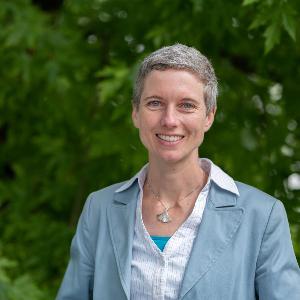
© LMU
“The focus of the 27th UN Climate Change Conference will be on how to phase out coal, gas and oil and how to implement the envisioned end to deforestation. Yet even these transformations will not be enough to reduce global emissions to “net zero” by 2050. Some emissions – such as methane in cattle farming – are difficult to avoid completely. We will therefore also need methods that extract carbon dioxide from the atmosphere – so-called carbon dioxide removal (CDR).
There are many ways to do this. In the case of reforestation and agroforestry, trees absorb CO2 by means of photosynthesis. Chemical filters, too, can remove carbon dioxide from the air – either directly out of the atmosphere or following the combustion of bioenergy. Subsequently, CO2 can be sequestered permanently in products or stored in geological reservoirs. Research into these options is urgently needed if we are to reach our climate targets.
Funded by the Federal Ministry of Education and Research, our CDRterra research program investigates the feasibility of land-based methods of removing CO2 and studies the associated risks, with one goal being the creation of the scientific basis for political decision-making. Still, the option of removing CO2 from the atmosphere must not distract us from our most important task: to drastically reduce emissions in the first place.”
Professor Julia Pongratz holds the Chair of Physical Geography and Land-Use Systems at LMU’s Department of Geography.
New report by Global Carbon Project:
No sign of decrease in global CO2 emissions
For more on Professor Julia Pongratz's research, see: Working the land to save the climate

© LMU / LCproductions
“In the 18th century, 80% of the world’s suitable land area was still covered with pristine primary vegetation. Today, the figure is just 30%. This decline was caused mainly by the expansion of agricultural land, which now accounts for about 50% of global land use. Such large-scale changes in land use have huge impacts on our environment. They have made a substantial contribution to climate change, for example, as well as to a loss of biodiversity.
The demand for agricultural products such as food and animal feed is increasing due to a growing world population, changing dietary habits and an increasing use of bioenergy. To satisfy this growing demand and guarantee food security, agricultural production would have to be doubled by 2050. A further expansion of agricultural land, however, conflicts with the need to protect biodiversity and mitigate climate change. Thus, it is all the more important to manage land – a limited resource – more efficiently, especially in the context of agriculture. This could be achieved by sustainable intensification which aims at increasing farm yields through optimizing cultivation practices while minimizing environmental impacts. This could e.g. include improving seeds or applying precision agriculture to increase resource efficiency. A recent LMU study shows that the world’s arable land could be reduced by almost 50% in this way. The freed-up land could then be used for reforestation, for example, or to create conservation areas.”
Julia Schneider and Dr. Florian Zabel work at the Chair for Nexus-Research of LMU’s Department of Geography.
Agriculture: Global cropland could be almost halved

“The most important instrument to reduce CO2 emissions is carbon pricing. The higher the price that must be paid for emitting CO2, the more companies and consumers will strive to avoid this form of pollution. But how high must the price of carbon be to achieve the climate targets? Only the market can find out. In the EU, a dedicated market has been created for this purpose, on which emission rights are traded in the form of certificates: the European Emissions Trading System (EU ETS).
The EU ETS covers the entire electricity generation and energy-intensive industry sector, i.e. nearly 40 percent of European emissions. Every power or steel plant must purchase an emissions certificate for every ton of CO2 emitted. The EU determines the amount of pollution by the quantity of certificates issued, which are either auctioned or freely allocated. In the course of emissions trading, the carbon price adjusts such that exactly the amount of CO2 dictated by the supply of allowances is emitted. Emissions trading results in CO2 reductions at the lowest possible cost: CO2 emissions are avoided wherever avoidance is cheaper than the carbon price. Conversely, pollution continues when the cost of avoiding CO2 is higher than the carbon price.
Since the introduction of the EU ETS in 2005, ETS emissions have fallen by 43 percent across Europe, even though the CO2 price was relatively low at less than 20 euros per ton. In 2019, the pace has been accelerated. The number of certificates is being reduced by 2.2 percent annually, which has pushed the price up to 80-90 euros. In the EU, an additional emissions market for the buildings and transport sectors is still under discussion. In Germany, it has already been introduced in 2021.”
Professor Klaus M. Schmidt holds the Chair of Economic Theory at LMU and chairs the Scientific Advisory Board to Germany’s Federal Ministry for Economic Affairs and Climate Action.
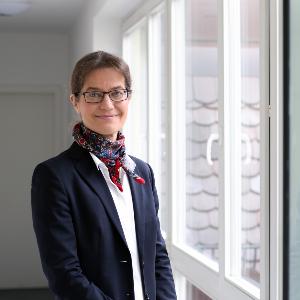
© ifo Institut
“Energy transition is a term that describes fundamental changes in the energy supply. For instance, the shift to the use of coal, gas and oil in the course of the Industrial Revolution is a historical example of an energy transition.
Since the dawn of the current millennium, however, the term energy transition has primarily been associated with stopping the use of fossil fuels and the corresponding move toward a sustainable energy supply based purely on renewable energy sources. This energy transition is closely connected to efforts to mitigate climate change, the aim being to reduce emissions of CO2 and other greenhouse gases. In addition, further objectives – such as decentralization of the energy supply and the reduction of other externalities arising from the burning of fossil fuels – are also frequently linked to the concept.
In Germany, the term rose to prominence above all after the nuclear disaster in Fukushima. Initially, the focus was on abandoning coal, gas and nuclear energy in the production of electricity and instead ramping up wind and solar energy. However, since a complete withdrawal from the use of fossil fuels is imperative in order to reach the climate targets, the term is today used to describe the transformation of the whole energy system, including transportation and heat generation.”
Professor Karen Pittel holds the Chair of Economics, spec. Energy, Climate and Exhaustible Natural Resources at LMU. She also heads the ifo Center for Energy, Climate and Resources.

© v.zign
"Climate monitoring denotes regular, continuous measurements with the aim to determine the state of the climate system and to detect changes. Variables of interest include temperature, precipitation, or sea level, which have experienced significant systematic changes in recent decades due to anthropogenic activities. At the same time, an attempt is made to quantify and to better understand those atmospheric components that contribute most to the observed changes in temperature and sea level. Besides the well-known greenhouse gases CO2 and methane, these include solar and thermal radiation as well as clouds and aerosol particles.
The observations are gathered from terrestrial measuring stations and by satellite-borne sensors. Procedures to assure the quality of data for greenhouse gases and radiation have long since been established (in the form of the Global Climate Observing System, GCOS). At present, a harmonized European Aerosol, Clouds and Trace Gases Research Infrastructure (ACTRIS) is currently being developed as well. LMU operates a station in the center of Munich and is an important partner to ACTRIS. In the years ahead, it will systematically ramp up its measurements of clouds, precipitation and aerosol particles.”
Professor Bernhard Mayer holds the Chair of Experimental Meteorology at LMU.

© Oliver Jung/LMU
“Liberal constitutional states grew out of bourgeois revolutions in the 18th century, which, in the wake of the 19th-century Industrial Revolution, evolved into democratic welfare states in the 20th century. This development came – and continues to come – at the expense of nature. In light of species extinction, the climate disaster and the literal trashing of the planet, we therefore now need an ecological revolution in our legal and constitutional order.
To this end, we can flesh out the principle of ecological responsibility in our constitution, Germany’s Basic Law, firstly by recognizing the ecological rights of both, humankind and nature. Second, we must above all place effective limitations on fundamental economic rights in order to safeguard the common ecological good. In this way, central importance will be attached to the transformation of property ownership rights within our capitalist social and economic order.
Above and beyond that, we also need a new ecological approach in our understanding of democracy, the rule of law, the welfare state and our federal structure. Ecology too must take its place as a core principle of state. To realize this principle, ecological functions will be defined for all government bodies. Examples include the ecological budget discussions engaged in by the Bundestag (Germany’s lower house) and the ecological policy guidelines followed by federal government.”
Professor Jens Kersten holds the chair of Public Law and Governance at LMU.
Interview with Jens Kersten:
“I would give nature rights”
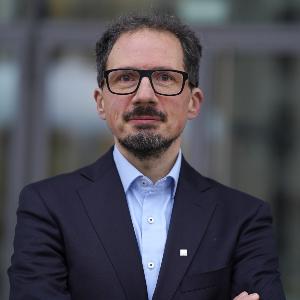
© David-Pierce Brill
“All kinds of debates are raging about the state of our ecosystems and societies, covering everything from humans and other organisms to the question of how we can live sustainably and well on our planet, and how we can exit from our current trajectory toward a hazardous future.
These days, one term crops up again and again in the course of these debates: Planetary health references the many and varied connections between ecosystems and both individual and collective health. How, for example, do more frequent and more intensive heat waves affect our physical constitution and our mental health? How do we deal with the fact that a changed climate extends the pollen season while enlarging the habitat for insects that spread tropical diseases? How can we stay healthy without destroying our planet?
Planetary health is a transdisciplinary field spanning research in areas such as medicine, public health, geography and biology, but also the social sciences. Issues touching on the humanities are likewise addressed: How have health risks influenced historical development? What is health exactly? What is prosperity? Will we gain a better understanding of the direct impact of global warming if we realize how it directly affects our physical wellbeing? Does this understanding place us under obligation to take ethical action?
Thinking around planetary health and actors in this field thus feed into society at large in all kinds of ways: in basic science and activism, in applied research and science communication. It is also important to mention those who monitor the field itself, reflecting on boundaries that must not be blurred and analyzing how science assumes responsibility (but not dominion) in a pluralistic democracy.”
Dr. Bernhard Goodwin is Executive Director of the Munich Science Communication Lab and Head of LMU’s Department of Media and Communication.
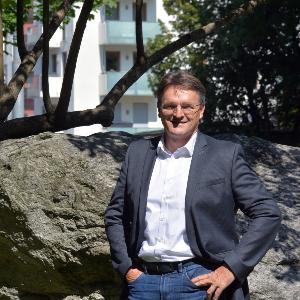
© LMU
“There is no single, generally valid definition of ‘extreme weather’. It always depends on the con-text of the event, but also on the perspective of various scientific disciplines. Expressed in its sim-plest terms, extreme weather is described as an event associated with weather conditions such as heat, storms or heavy precipitation that is rare or reflects extreme values in a given place and dur-ing a given season.
Statistically, an extreme weather (or climate) event is defined as the occurrence of a value for a weather variable that is above (or below) a threshold near the upper (or lower) end of the distribu-tion curve of values for this variable as observed over the long term. In many cases, it will involve designators such as ‘below the 3rd percentile’ or ‘above the 97th percentile’ of such a range.
From an integrated perspective, extreme weather events can be expressions of unusually severe weather or climatic conditions that can have devastating effects on society and/or natural ecosys-tems. A distinction must nevertheless be drawn between weather-related extreme events that are short-lived (such as heat waves, freezes, heavy downpours, tornados and tropical cyclones) and climate-related extreme events that reflect longer-term anomalies or involve an accumulation of weather events. Examples of the latter include droughts and long-lasting floods, both of which can be triggered by a variety of factors.
Taking a broader definition, climate extremes can be the result of an accumulation of weather and/or climate events that are not extreme in isolation but that, when taken together, can lead to extreme conditions or impacts, either by exceeding critical thresholds within a social, ecological or physical system, or by occurring simultaneously with other events.”
Ralf Ludwig is a Professor at LMU’s Department of Geography.
Interview on the drought: “ We must learn to get by with less water”
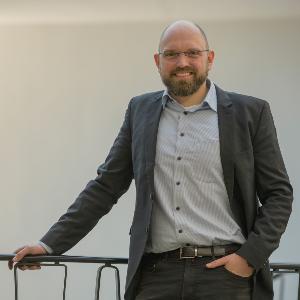
© LMU
“The impacts of climate change are already visible and will increasingly be felt in the future. The rise in intensity as well as frequency of, for example, heat waves, droughts, floods and storms is among the most important changes in many regions. Societies around the globe therefore need to adapt and increase their resilience – which they have been struggling to do thus far, as the severe economic damages and social losses of recent extreme events have shown. The question how adaptation and resilience can be fostered hence marks an increasing field of research. It yields important knowledge, supporting decision-makers, including those who will convene at COP27 in Egypt over the coming days.
The resilience debate in the context of climate change includes three main aspects: First, there is an urgent need to acknowledge that extremes and crises are increasingly part of the “new normal” and that societies as well as ecosystems must learn to deal with them. Orienting things like spatial planning or disaster management on past conditions of alleged normality and stability necessarily leads to false assumptions and increases rather than decreases risk in the long run. Second, societies and ecosystems need to raise their capacity to withstand shocks and efficiently recover from them. A prime focus therein is on key functions within systems, e.g. in relation to critical infrastructures such as for health care provision or electricity supply in cities. Third – and probably most challenging for societies – resilience thinking includes learning from past shocks or disasters and bringing about the deeper systemic changes needed for successful long-term adaptation. For example, practitioners and decision-makers need to ask whether there are settlements or infrastructures with such high exposure to future climate hazards, e.g. in coastal areas or flood plains, that a proactive retreat is advisable, despite the social, economic and cultural difficulties such resettlements would entail.
All these aspects present massive challenges for risk managers and political decision-makers – and for societies at large. Ongoing research, including for instance within BMBF and ERC funded projects at LMU, can provide relevant and urgently needed guidance for tackling these challenges. For example, we analyze how ambitious yet achievable hard targets for adaptation might look like, how conflicting goals can be balanced and how so-called maladaptation in regional adaptation processes can be avoided.”
Prof. Dr. Matthias Garschagen holds LMU’s Chair in Human Geography with a Focus on Human-Environment-Relations. He has been serving as a lead author in several IPCC reports.
Interview: “
Previous risk assessments were too optimistic
”
Interview: “
It makes a considerable difference whether we end up with 2°C or 1.5°C of global warming
”
The expertise of Professor Matthias Garschagen and Professor Julia Pongratz is in demand at various events at the UN climate conference:
German Pavilion: programme
Global Carbon Budget: results & implications (livestream)